5 Homesteading Skills for Beginners to Master First
Homesteading skills for beginners to master first can be learned with or without land. If you want to start living the homesteading lifestyle, but have no idea where to start, these ideas can help you get started no matter where you live. Start homesteading with these skills and resources today!

This post may contain affiliate links. When you shop through them, I may earn a small commission that blesses our large family at no extra cost to you. Thank you!
Homesteading skills for beginners to master first can be learned with or without land. And, there are so many skills that can be learned without land that are important to begin building a homestead. However, we are just focusing on 5 simple homesteading skills that can be mastered first for those who don’t know where to start. Starting with these 5 simple homesteading skills will help you be off to a good start for the rest of your homesteading journey.
Hi, I’m Priscilla!
As a young, growing family facing job loss in 2013, with a toddler and a newborn baby, I wanted to learn how to grow food to supplement our rising grocery bill, but I had no experience. So, I called on my mom to help me start my first garden as cheap as possible. I remember her stewarding a small garden from time to time when I was growing up. We started one with blocks, soil, seeds, and a few starters that she helped me invest in. And that’s how I started!
Before I was a homesteading, homeschooling mom I was a professional musician and music teacher. I carried over my teaching experience into homeschooling my children, but I learned it was much different teaching your own children. And, when I started homesteading, I started with NO experience. It was something I never imagined doing. I had to do a lot of researching and learning each season. So, I know how hard it is to start homeschooling and homesteading with no experience!
After 2020
After the events of 2020, we saw the vital need to learn to grow, raise, and store real God-given food in abundance, and continue homeschooling all of our children. We felt God had a new call and season for us. So in 2021, we left everything behind, and moved from northwest Indiana to southern Georgia. And we just got started!
How we can help you
Now, I’ve homeschooled for 11 years and have 6 children of homeschool age with 1 more in waiting. And, we established our homestead in 2021 with lots of research and no experience. We built up gardens and livestock and had a small farmstead business within 2 years. We stewarded a small farmstead by selling fresh eggs and healthy chickens to many happy customers!
Also, we started taking and completing several homesteading courses, and we continue our education every year. And, I’m always looking for ways to make things more time efficient by making them simpler to do and sustainable. When things are simpler, they are more sustainable in our already full lives.
But, an unexpected turn of events landed us in a rental home in an HOA neighborhood while we search for land. We proved to ourselves that we could still homestead even with all the restrictions. We knew if we could do it, others could do it too! So, we started this blog and our newsletter to equip modern families to live abundantly in their homesteads and homeschools no matter where they live and with no overwhelm or burn out. NO EXPERIENCE NECESSARY! We offer and affordable solutions, free printables, resources, and encouragement for your Christ-centered beginner homesteading, homeschooling journey.
Quick Start Homesteading for Beginners without Land : 5 Homesteading Skills to Master First
1. Cooking from Scratch
The average American household spends about $6,000 a year on food with an average of $2,700 spent on eating out! That is almost HALF of the average yearly amount spent on all food! Another source actually says that an average of over $7,300 is spent on food per year per U.S. family. So, half of that would be over $3,500 spent on eating out. Oh my, I think this information is motivating to start homesteading, but especially a great reason to cook from scratch. Read more ways to save money here.
Ready-made and frozen meals from the grocery store are also sources of highly processed and genetically modified ingredients. But they aren’t just unhealthy, they add up to higher grocery bills and more money spent per year. People think that they are saving money by buying cheap ready-made or frozen meals for their family. I personally don’t want to trade my family’s health for the appearance of constant low-cost. What people don’t realize is that cooking everything from scratch actually ends up being MUCH cheaper over time. You can even grow many of your own healthy ingredients!
People also believe that they cannot afford to buy healthy, organic, safe ingredients to cook all their meals from scratch. This will vary. Healthy seafood and pasture-raised meats can be more expensive than regular products. But the trade off is in buying ingredients for your sides, cooking from scratch, and growing as much food at home as you can. You can also raise your own meat eventually, if you live where you can. Cooking from scratch makes so much more room in your grocery bill for organic ingredients, pasture-raised meats, and other items you may desire, but it’s also healthier.

Bonus Tip: Cook from scratch with Seasonal Produce
Cooking from scratch with seasonal produce will save you even MORE money. In-season produce will have low prices and sales, but if you are growing food or will grow food in the future, it is good to start practicing cooking with produce that is in season. Then, you will be prepared and know how to cook with produce that is in season when you are growing an abundance of it.
How do you start cooking from scratch?
Let me not downplay this. This is a simple skill in that it keeps food simpler and is not laborious. But, I remember how overwhelming it felt.. the thought of cooking every meal from scratch for my large family. When I went hard towards cooking from scratch we were already a family of 8. I had cooked plenty of meals from scratch over the years, but not every meal, and I relied on many conveniences like boxed and frozen foods.
The key to learning to cook from scratch, and continuing to, is to always keep a well-stocked pantry. We call it an “ingredient household”. It’s fine to have boxed pasta and frozen sides and meals for emergencies, but learning to cook those foods from scratch will save you a lot of money, save your health, and be a useful skill to whip anything up from common ingredients if that’s all you have. You will discover that stocking up on basic ingredients is actually more convenient than convenience foods. Cooking from scratch could even be considered a survival skill.
Remember 2020 when stores were out of bread? And then, they were out of yeast. So, people had to learn how to make sourdough bread, and it became a trend to learn this age old skill that was actually helping people feed their families. Stock up on basic ingredients and start learning to cook from scratch by just learning a recipe at a time. Replace one convenience food or meal at a time. Make meals focused on meats and vegetables. Make homemade noodles. Bread is a great place to start. So, speaking of baking bread..

2. Baking from Scratch
In 2022, U.S. households each spent an average of over $700 on cereals, breads, and bakery products. I don’t know about you, but I could use an extra $700 a year! This is INSANE to me. Baking all bread, bread products, and desserts at home is one of my favorite ways to save money as a large family. First off, I did not start baking bread to save money. I made a commitment to baking all of our bread products and desserts at home after learning about all the harmful genetically modified and highly processed ingredients in these store-bought products. One of the reasons we started homesteading and growing food in the first place. (Get our simple bread recipe in our free printable library!)
Once we stopped buying these products, and started making them at home, we immediately saw a large decrease in our grocery bill. You will especially see a decrease if you were trying to buy “healthier”, organic, or “natural” products in the bread and dessert family. After learning regular bread making, we learned to make sourdough bread and sourdough products. Sourdough bread making is another great skill to save even more! Learn here in this Simple Sourdough course by Lisa Bass!
Bread is one of the first recommended food items to learn how to bake at home from scratch. Other easy bread and dessert products you can switch out for healthier and cheaper homemade products are: noodles, crackers, cereals, granolas, breadsticks, biscuits, pancakes, cakes, dinner rolls, and more!
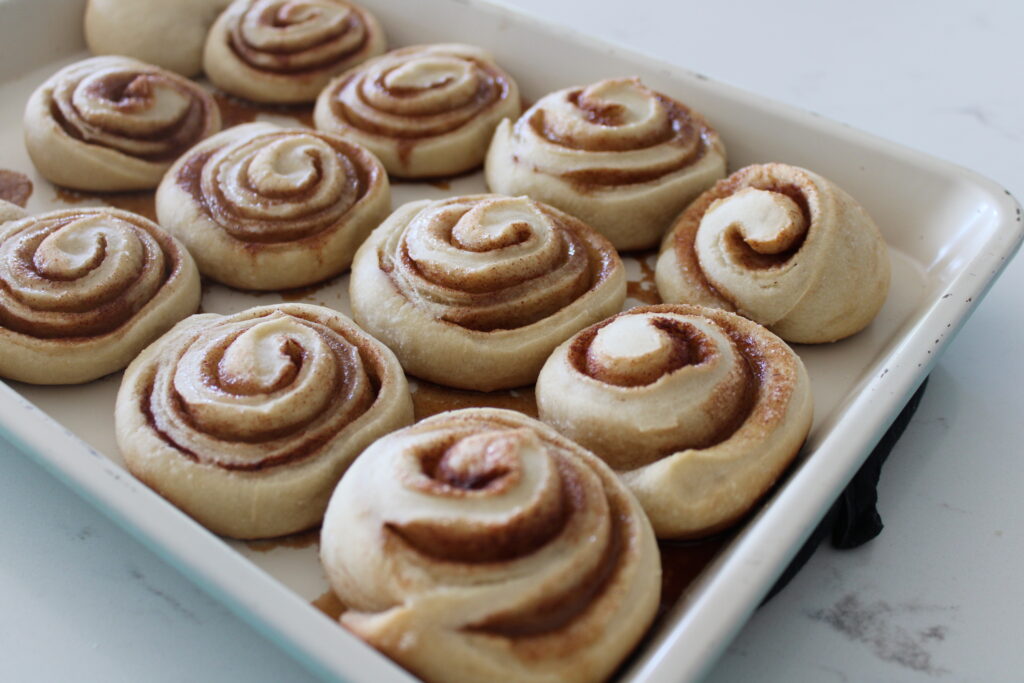
Learn to Mill Your Own Grains
When you are ready, go a step further and learn how to mill your own grains at home for the healthiest, most nutrient-dense products, as well as the most cost effective. Fresh milled wheat is said to have about 40 of the 44 most vital vitamins and nutrients our bodies need. When you use freshly milled flour, desserts are no longer a junk food, they become a superfood! Another brownie? Why, yes, thank you!
Also, you can store wheat berries for years, and they are way less expensive to buy. The initial purchase of a quality grain mill is an investment, and you can make it in payments if you’d like, but the health benefits and shelf life are far worth it. Get $20 off our grain mill here and other grain mills and select sourdough products here. Here is a low-cost course to learn how to freshly mill grains with Lisa Bass.
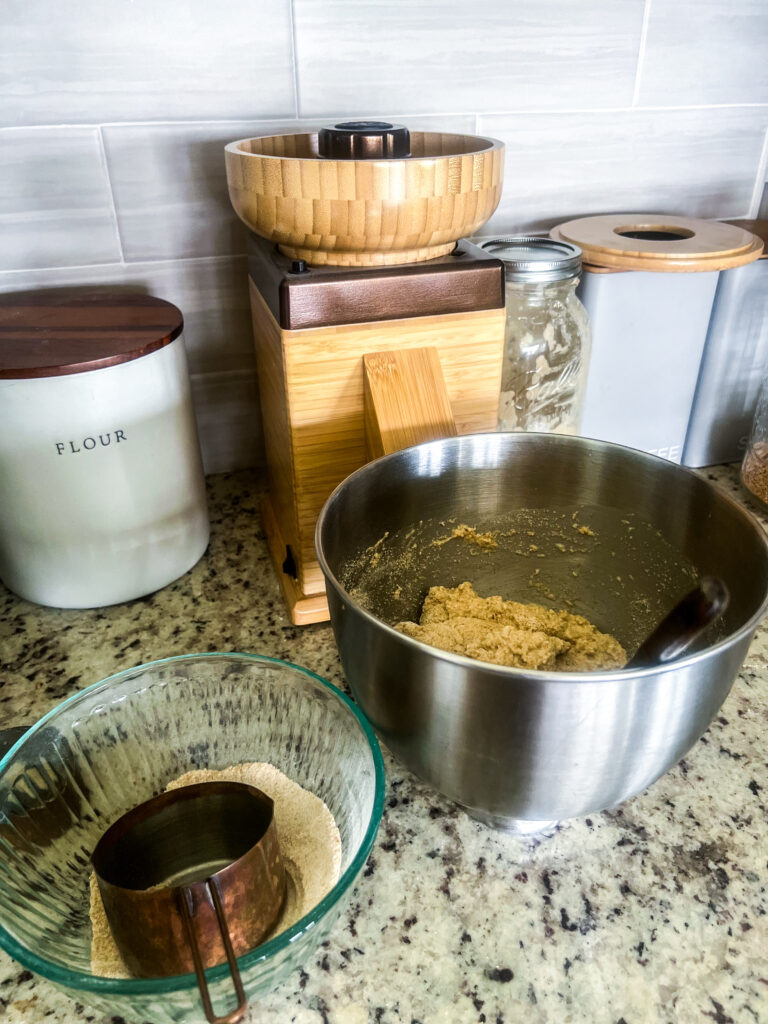

3. Meal Planning
Meal Planning. These words can either have a negative connotation to you, or a positive one. For a long time, they were negative words to me. But, I came to realize that it was because of my lack of cooking skills, not because I couldn’t plan! I’ve been a type A planner most of my life; a recovering perfectionist. So, it wasn’t the planning part that messed with me, it was the what do I know how to cook, with what food, and will everyone in my large family eat it?
Tons of people sell meal plans. That’s not what I’m here to give you today. Today, I want to encourage you. I want to encourage you that if any part of you ever felt negatively towards meal planning you are not alone. And, you can overcome those feelings. Because I did. Here are just a few tips to help you simplify meal planning. Because remember, we are here for you to make things simple because when something is simple it is sustainable. Get simple meal plan printables in our free printable library!
Simple Tips for Meal Planning:
Stock up on ingredients.
Stock up on ingredients, not convenience foods. You will discover that stocking up on basic ingredients is actually more convenient than convenience foods. (Ingredients like flour, sugar, salt, baking powder, spices, herbs, olive oil, oats, rice, wheat berries, etc.)
Shop your pantry and freezer first.
Use what you already have and create meals around it. Look in your freezer, and look in your pantry. What do you already have? What can you make with what you already have? How simple can you make it?
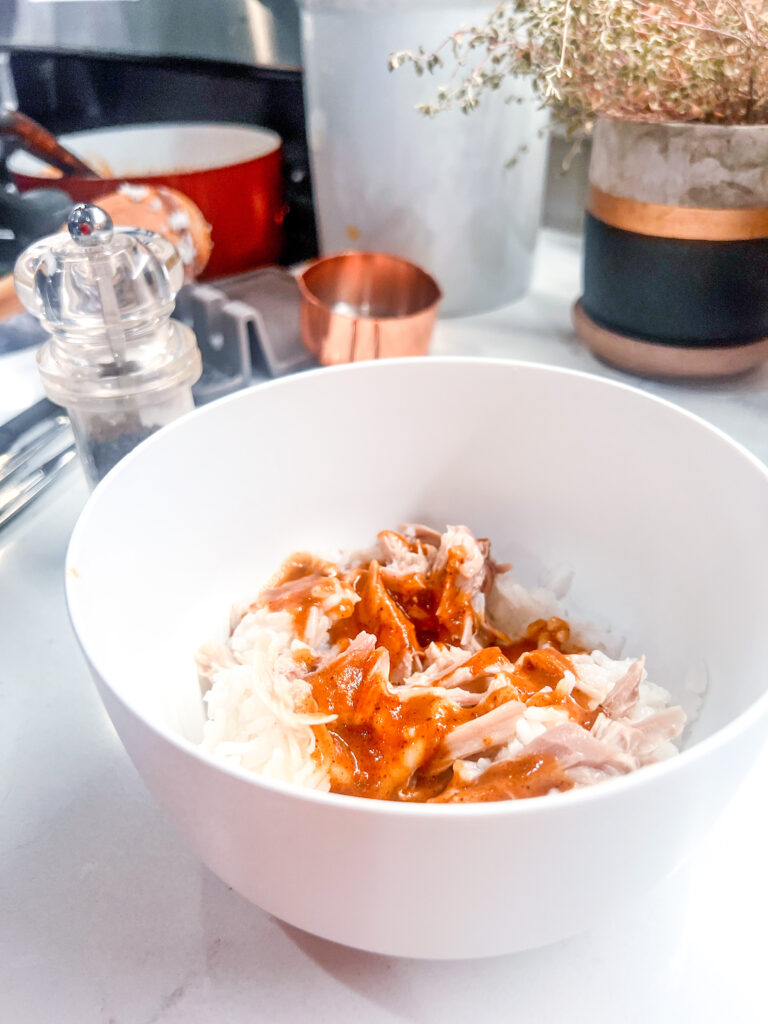
Create a list of your family’s favorite meals.
Think about your family’s favorite meals, and pull from there. This should be a list of meals that everyone in your family, even the pickiest, love to eat.
Create a list of quick or simple meals.
Use these ideas when the meat didn’t defrost, it’s too late to cook, or you don’t feel well. Or, even plan to use at least one quick, simple meal a week. This can be something like spaghetti or chili.
Create a list of as many simple meals as you can with similar ingredients.
Think about the ingredients and meats you constantly have on hand and create a list of as many simple meals as you can with similar ingredients. That way if every week or so you are buying similar cuts of meat, rice, pasta, whatever it is.. you can have a whole list of what you can do with it to pull ideas from.
Pull meat from the freezer to thaw in the refrigerator every week.
I do this on Mondays because that is my meal planning day. It takes me less than ten minutes to go through my shared note on my phone of what meat is in my freezer and pull together ideas for the week. Then, I head to the freezers and pull out Monday through Thursday’s meats to thaw. I also pull out any meat I may want to make my kids for lunch that week.
Make a freezer inventory.
This can be on your phone or pen and paper. However you want to make it is up to you. And, it can sound overwhelming, especially if you have a lot of meat and other freezer items, but do it once and then keep up with it and you don’t have to do it again. Seriously, just do it. We have two refrigerators with freezers filled, and a deep freezer. (We actually have two deep freezers, but one is not in use right now since we are not actively raising chickens right now.) I like it on my phone because my husband and I share the note and we can easily add what one of us buys, and I can subtract as I cook. Simple, quick habit that literally helps meal planning because I don’t have to sit and stare and daydream looking in the freezers. I have an inventory and I keep up with it, so I know exactly what’s in there without looking. Saves me so much time!
Make Fridays (or any day) a set special day every week.
Every week we have homemade pizzas on Friday. We’ve done this for so many months. We only missed one Friday which was a family wedding and they still had pizza. (Isn’t that funny?!) Anyhow, it may seem like a lot of work, but I make the doughs and then, invite my kids to roll them out and top them. While we make the pizzas we have a candle lit and Italian restaurant music playing in the background to create a fun atmosphere. Not only is every Friday’s meal planned without thinking, but it can become fun family time, and everyone eats it!
Don’t forget to think about seasonal produce.
Maybe you want to make seasonal lists of meal plan ideas. That is totally up to you. I don’t do this, at least not yet, but I do consider what I’m currently buying, stocking, and preserving.
Pick your day and plan!
Choose the day a week that works for you to meal plan your week’s meals. Or, maybe you want to do it bi-weekly or monthly. I have thought about going monthly, but I have such an ingrained habit of pulling out my planner every Monday morning after my prayer and Bible time and planning my week. It is a discipline that I enjoy, and I have no desire to change it right now. (*shrug and smile*) So, do whatever works for you!

4. Preserving Food
Whether you have land or not, or are going to be getting land in the future (or not), preserving food is a skill that you can master anywhere. I could have broken this up in to the separate ways to learn how to preserve food, but you may not be interested in every way. So, pick one preservation method that you believe would be the most useful to you and your family. Learn that preservation method really well first, then add another when you are ready. Here we are just going to give a quick understanding of what each preservation method is so you can choose one.
With canning and other food preservation methods, we always recommend that you read and learn on the National Center for Home Food Preservation‘s website. They have information and approved guidelines for preserving and storing food all for free.
Canning:
Wikipedia says, “Canning is a method of food preservation in which food is processed and sealed in an airtight container (jars like Mason jars, and steel and tin cans). Canning provides a shelf life that typically ranges from one to five years,[a] although under specific circumstances, it can be much longer.[2]” Canning food is a great way to build up your pantry with food that can last a long time. You can buy food in bulk and can it, or can your own harvest using this method of preservation. There is pressure canning and water bath canning.
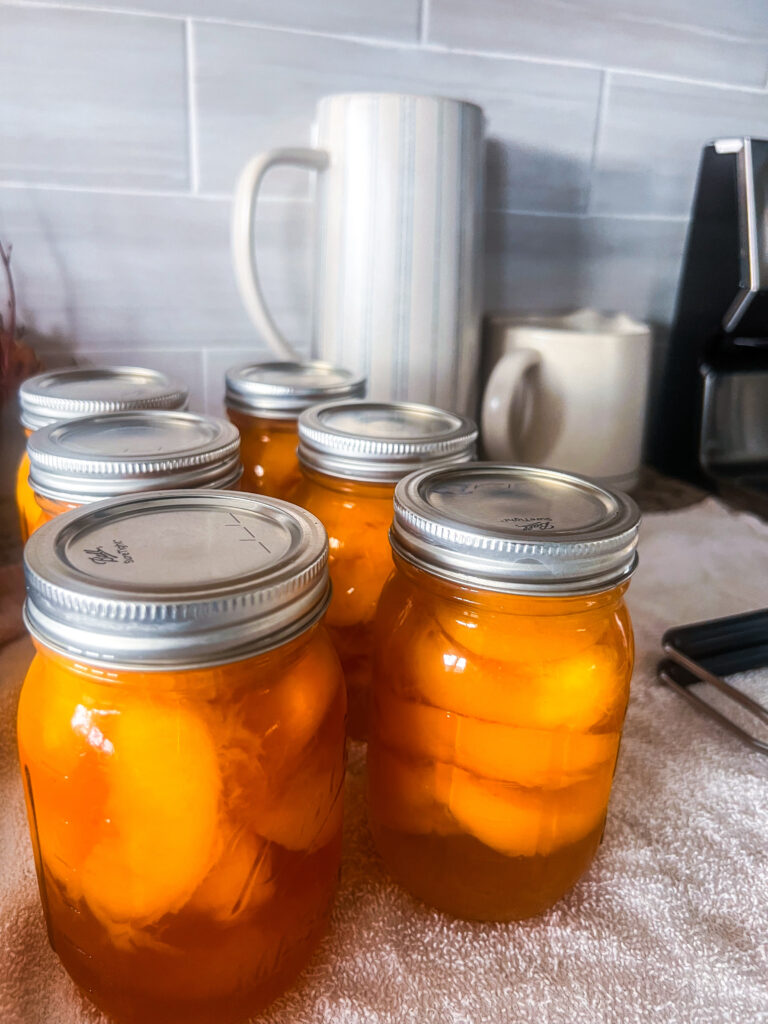
Water Bath Canning:
“Water-bath canning is only for produce that is HIGH in acid. We’re talking about tomatoes, berries, fruit, sauerkraut, and pickled vegetables. This means water-bath canning is for making jams, jellies, and pickled veggies. Their natural acidity—in addition to time in a boiling water bath—helps preserve them safely without the use of high pressure, although you’ll still need to take some precautions,” states (Almanac.com)
With canning and other food preservation methods, we always recommend that you read and learn on the National Center for Home Food Preservation‘s website. They have information and approved guidelines for preserving and storing food all for free. We use their website every time we can food for safety guidelines and times of processing.
Pressure Canning:
We like Michigan State University‘s explanation of pressure canning: “Pressure canning, using a dial gauge or weighted gauge pressure canner, is the only method recommended by the U.S. Department of Agriculture (USDA) for safely canning low-acid foods such as vegetables, meats and fish. Low-acid foods must be canned at a temperature of 240 degrees F or higher and held there for the time specified in the recipe to destroy the bacterial spores naturally present in these foods. Pressure canning uses pressurized steam to reach this superheated temperature. This pressurized heat destroys the potentially harmful bacterial spores, which can cause botulism. As the jars cool, a vacuum is formed, sealing the food in the jars and preventing any new microorganisms from entering and spoiling the food.”
Dehydrating/Food Drying:
“Food drying is a method of food preservation in which food is dried (dehydrated or desiccated). Drying inhibits the growth of bacteria, yeasts, and mold through the removal of water. Dehydration has been used widely for this purpose since ancient times; the earliest known practice is 12,000 B.C. by inhabitants of the modern Asian and Middle Eastern regions.[2] Water is traditionally removed through evaporation by using methods such as air drying, sun drying, smoking or wind drying, although today electric food dehydrators or freeze-drying can be used to speed the drying process and ensure more consistent results.[3]” (Wikipedia).

Fermenting:
WebMD.com said, “Food fermentation is the process where microorganisms, such as yeasts and bacteria, convert carbohydrates into alcohol or organic acids. This process not only preserves food but also enhances its flavors and nutritional value.” Read more about food fermentation here. Fermented foods are really good for your gut health, and you are probably already eating many foods that are fermented. Some examples are: yogurt, cheese, sour cream, kombucha, pickles, yeast breads, sourdough breads, wine, cider, and vinegar. Learn all about fermenting food in this simple course!

Blanching and Freezing:
Definition of Blanching-“…a process in which a food, usually a vegetable or fruit, is partially cooked by first scalding in boiling water, then removing after a brief timed interval, and finally plunging into iced water or placing under cold running water (known as shocking or refreshing) to halt the cooking process. Blanching foods helps reduce quality loss over time.[1] Blanching is often used as a treatment prior to freezing, dehydrating, or canning vegetables or fruits to deactivate enzymes, modify texture, remove the peel and wilt tissue.[2]” (Wikipedia).
(Britannica+3)”.
We talk a little about blanching in freezing in this post 8 No-Waste Ways to Preserve Peaches and give step-by-step instructions for blanching and freezing.
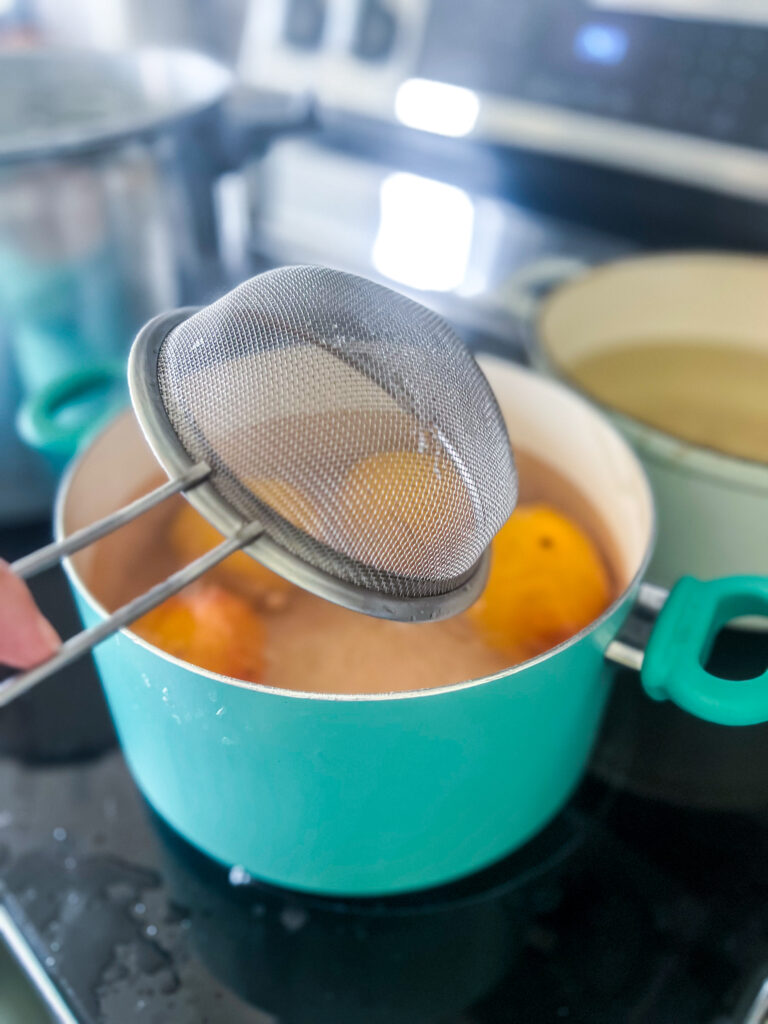
Flash Freezing:
“The term flash freezing simply means quickly freezing food at extremely cold temperatures. This allows the flavor, texture, and nutrients to be retained in the food,” as stated on (Easyfreezing.com). We explained flash freezing in simple terms in our post “How to Flash Freeze Peaches: A Quick and Simple Way to Preserve Peaches“. We said, “This is basically just washing and prepping your peaches, freezing them on something like a cookie sheet for a few hours, then transferring them to a freezer-safe container or freezer bag.”
It is the simplest way to preserve food, in our opinion, but flash freezing is for shorter-term storage than blanching and freezing or other methods of preservation. For example, food preserved by flash freezing typically lasts only up to about 3 months in the freezer. So, we use this for foods we know we will go through quickly or set a certain amount of a harvest aside to go through in this time. Blanching and freezing can help food last anywhere from 6 to 12 months.

Freeze-drying food:
“Freeze-drying, also known as lyophilization, is a form of dehydration. Food is first frozen, then dried under pressure to remove its water content.” (Healthline.com) We have not started freeze-drying food because we invested in a dehydrator to learn that method of preservation well first. Eventually, however, we do hope to add a freeze-dryer to our homestead kitchen.
For more information on freeze-drying, you can check out homesteadingfamily.com, which is one of our favorite websites, and the founders of the School of Traditional Skills where they (and other experts) teach this and many other homesteading skills. The School of Traditional Skills is our number ONE resource for all things homesteading. They teach almost every skill in this post! We can’t stress enough that we wouldn’t be the homesteaders we are today without it.
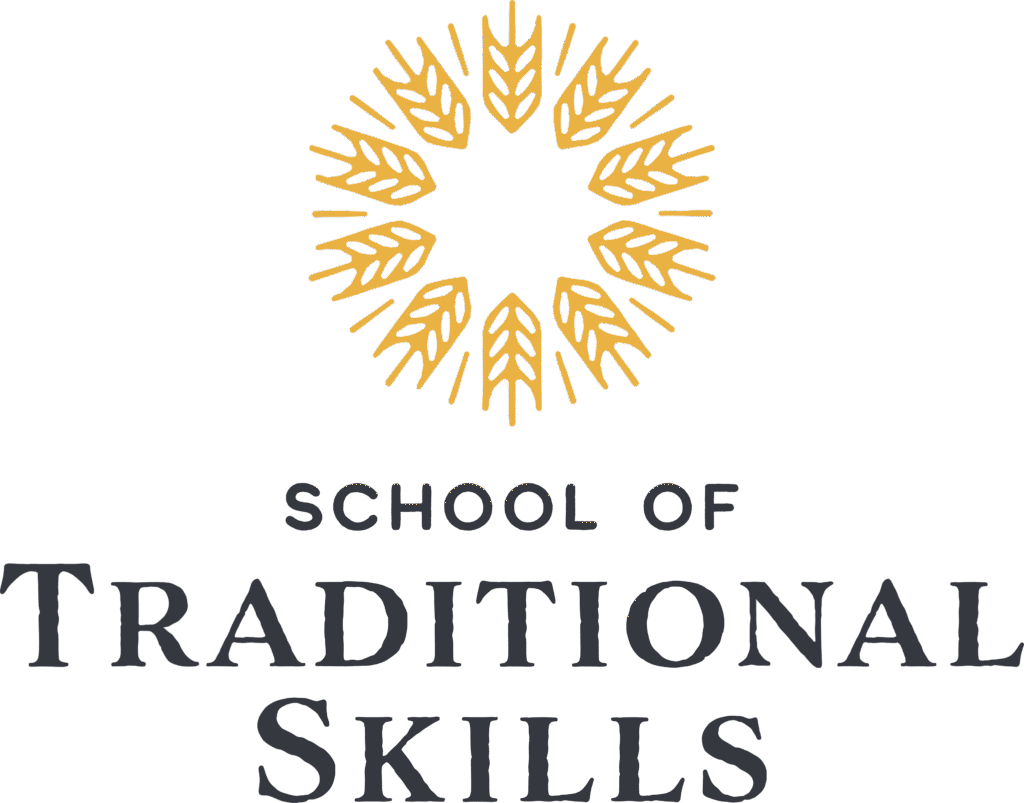
5. Container and/or Indoor Gardening
Now, it just wouldn’t quite be homesteading if we didn’t start growing food. Growing and raising food is a major part of homesteading and sustainability. No matter how much land you have, you can start to grow food. You can start by growing herbs and some vegetables indoors. Or, if you have the space, you can begin container gardening by growing food in pots, bags, planters, and whatever else you have. Of course, if you have some land or space that you can use outdoors, then you can also start raised beds or garden right in the ground! But, in this post we wanted to focus on skills that can be learned no matter where you live. (Get a free garden planner in our free printable library!)
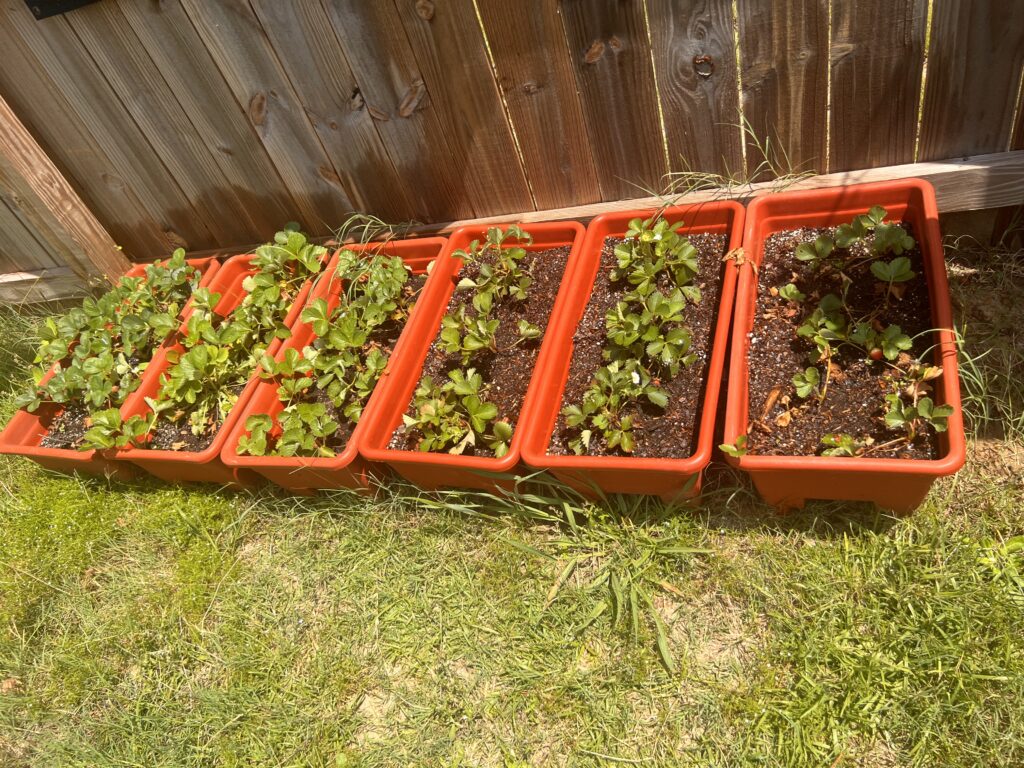
Container gardening:
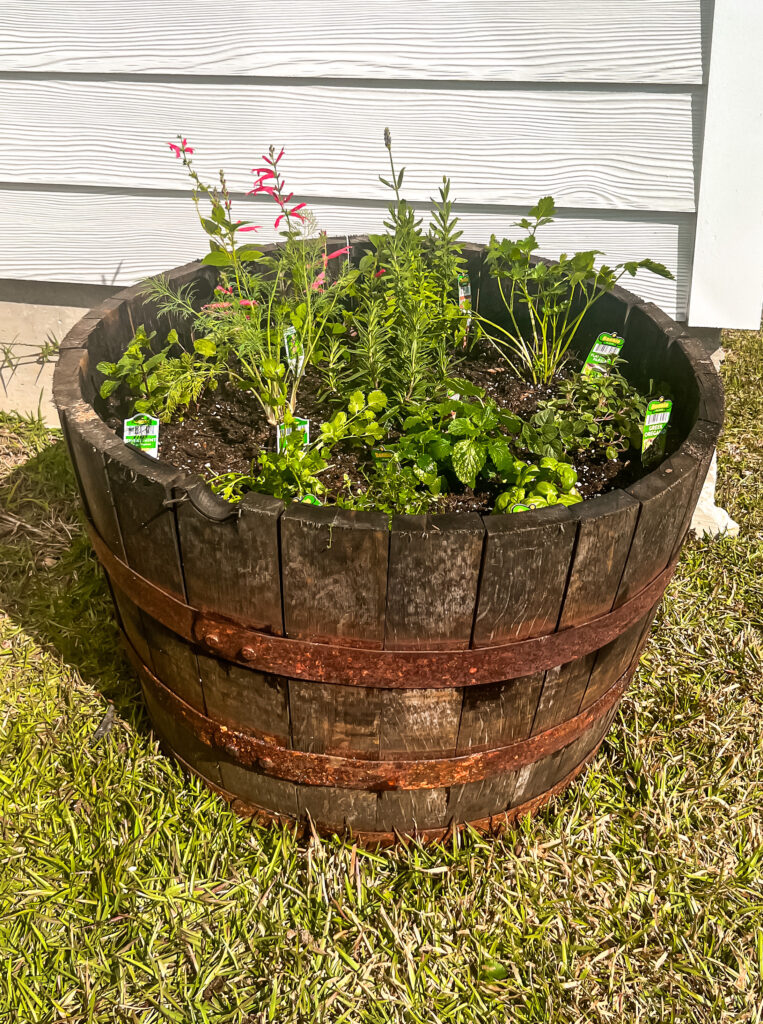
Container gardening can be practiced outdoors or indoors. It is a great way to learn to grow food because it will be low-cost and low-risk. You can start from seeds or buy seedling starts at a local store or get them from a friend. Almost all herbs grow well in pots, and many vegetables, dwarf fruit trees, and small fruit bushes can also grow well in containers. There are very few things that don’t grow well in containers. Just some food we’ve grown over the years in containers, pots, and bags: strawberries, blueberries, grapes, sweet potatoes, potatoes, onions, carrots, lemons, oranges, cherries, cabbages, lettuces and other greens, tomatoes, cherry tomatoes, and more. We’ve also grown several herbs indoors and outdoors in containers.
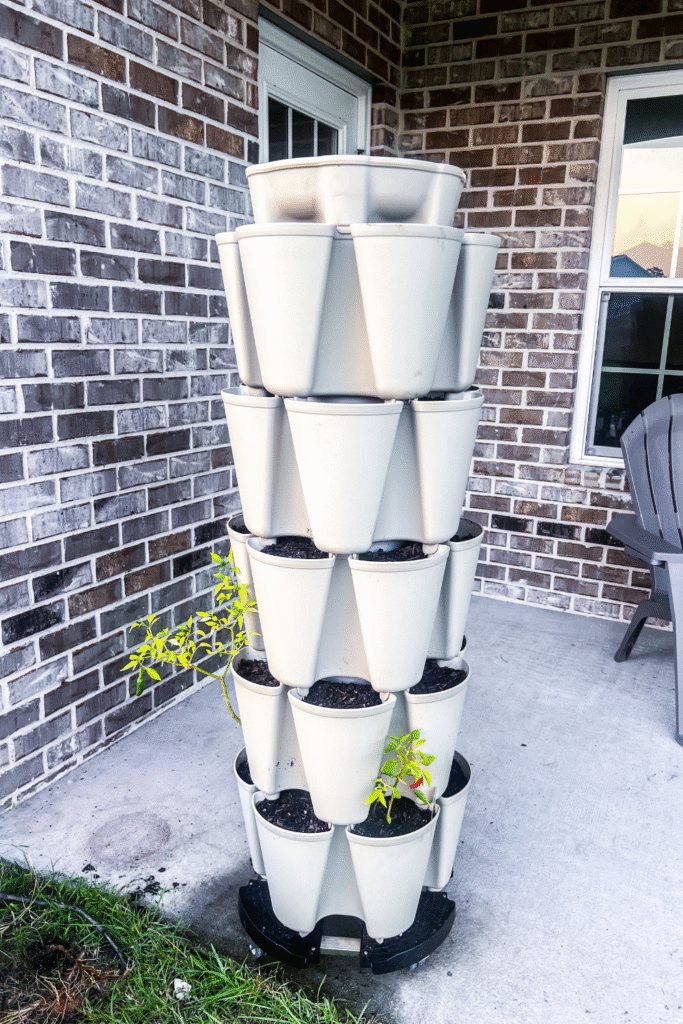
Indoor gardening:
Well, I don’t think I need to go and grab a definition of this one for you. This is growing food indoors! However, a sunny place in your home is best for growing food indoors, and some plants grow well indoors while others do not. Unless you want to get a whole hydroponic system indoors, or a ton of grow lights, you would want to utilize the amount of sunny space you have indoors and choose food based on your priorities. Maybe you only want to grow your most used kitchen herbs indoors. Or, maybe you want to grow medicinal herbs indoors. Maybe you want to grow tomatoes, greens, or even microgreens indoors. The choice is yours, but there are so many possibilities.
Growing food indoors is also a beginner-friendly homesteading skill to learn because you can control most of climate indoors. Also, pests and disease are less likely to intrude indoors than outdoors. Start small, get good, and then keep going by adding more.

Conclusion
There are so many skills that can be learned without land that are important to begin building a homestead. These are just 5 main skills that beginner homesteaders should master first. We hope you found the information on skills and resources in this post helpful. If so, don’t forget to share this post and subscribe to our newsletter for more simple solutions, free printables, resources, and encouragement!

Shop this Post:

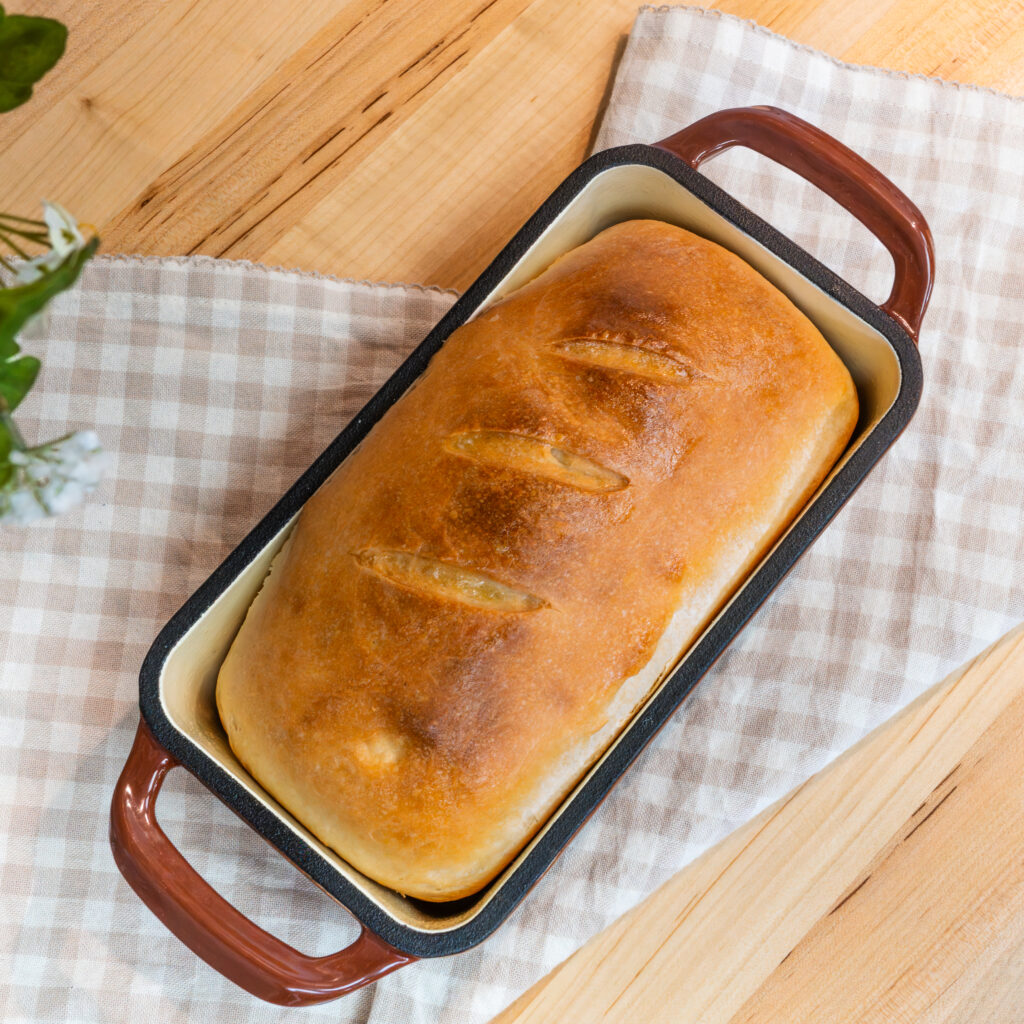
- Simple Sourdough Course by Lisa Bass from Farmhouse on Boone

- Freshly Milled Grains Course by Lisa Bass from Farmhouse on Boone



- Simple Food Dehydrator
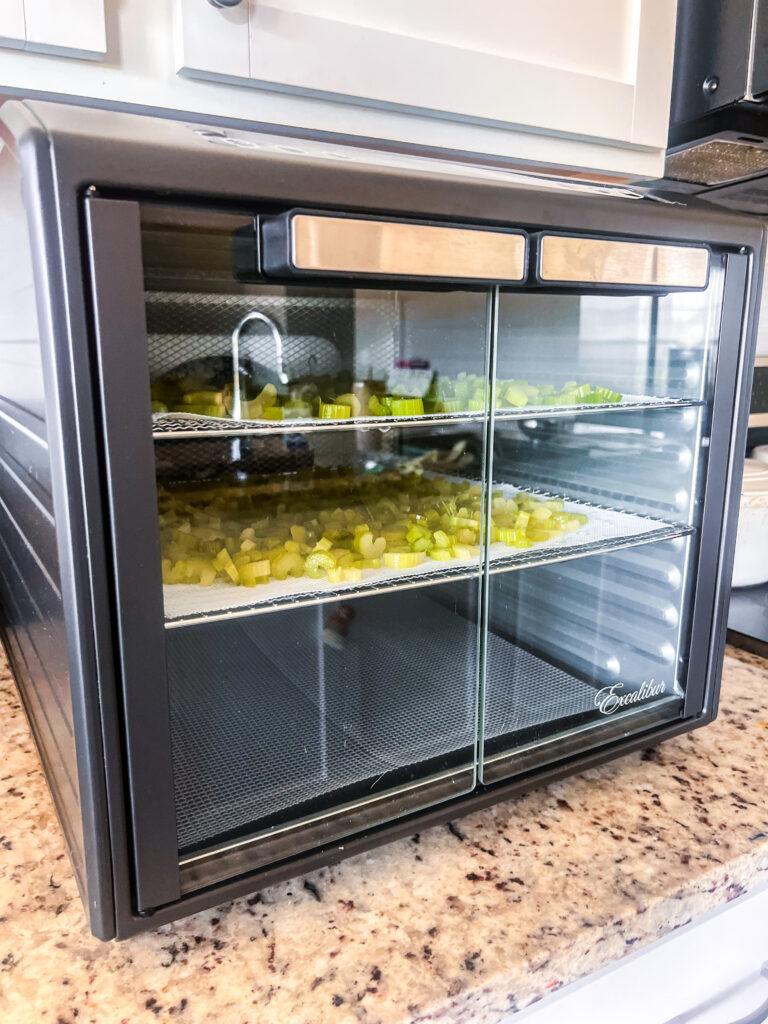
- Food Fermenting course by Lisa Bass from Farmhouse on Boone
 8 No-Waste Ways to Preserve Peaches | Homesteading & Sustainability
8 No-Waste Ways to Preserve Peaches | Homesteading & Sustainability 5 Reasons Enameled Cast Iron is one of the Best and Safest Cookware and Bakeware Materials | Homemaking, Natural Living, & Non-Toxic Living
5 Reasons Enameled Cast Iron is one of the Best and Safest Cookware and Bakeware Materials | Homemaking, Natural Living, & Non-Toxic Living How to Homestead through Transitions | Homesteading and Spiritual Encouragement
How to Homestead through Transitions | Homesteading and Spiritual Encouragement How to Make Raw Milk Butter WITHOUT a Churn | Homesteading
How to Make Raw Milk Butter WITHOUT a Churn | Homesteading How to Keep Chickens Cool with Peppermint Infused Ice Cubes | Raising Chickens
How to Keep Chickens Cool with Peppermint Infused Ice Cubes | Raising Chickens 4 Herbs for Healthy Chickens | Raising Chickens
4 Herbs for Healthy Chickens | Raising Chickens How to Use Eggshells to Make a Calcium Supplement for Chickens | Raising Chickens
How to Use Eggshells to Make a Calcium Supplement for Chickens | Raising Chickens 15 Health Benefits of Raw Honey | Honey
15 Health Benefits of Raw Honey | Honey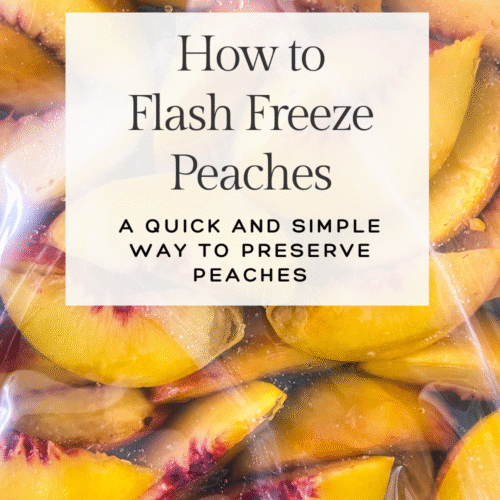 How to Flash Freeze Peaches: A Quick and Simple Way to Preserve Peaches | Homesteading Skills
How to Flash Freeze Peaches: A Quick and Simple Way to Preserve Peaches | Homesteading Skills 10 Ways to Save Money as a Large Family | Homesteading
10 Ways to Save Money as a Large Family | Homesteading 7 Ways to Create a Christ-centered Homestead | Homesteading & Christian Living
7 Ways to Create a Christ-centered Homestead | Homesteading & Christian Living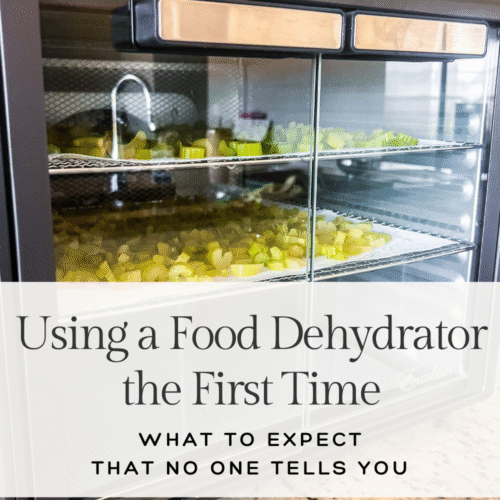 Using a Food Dehydrator the First Time: What to Expect that Most People Don’t Tell You | Homesteading Skills
Using a Food Dehydrator the First Time: What to Expect that Most People Don’t Tell You | Homesteading Skills
Leave a Reply